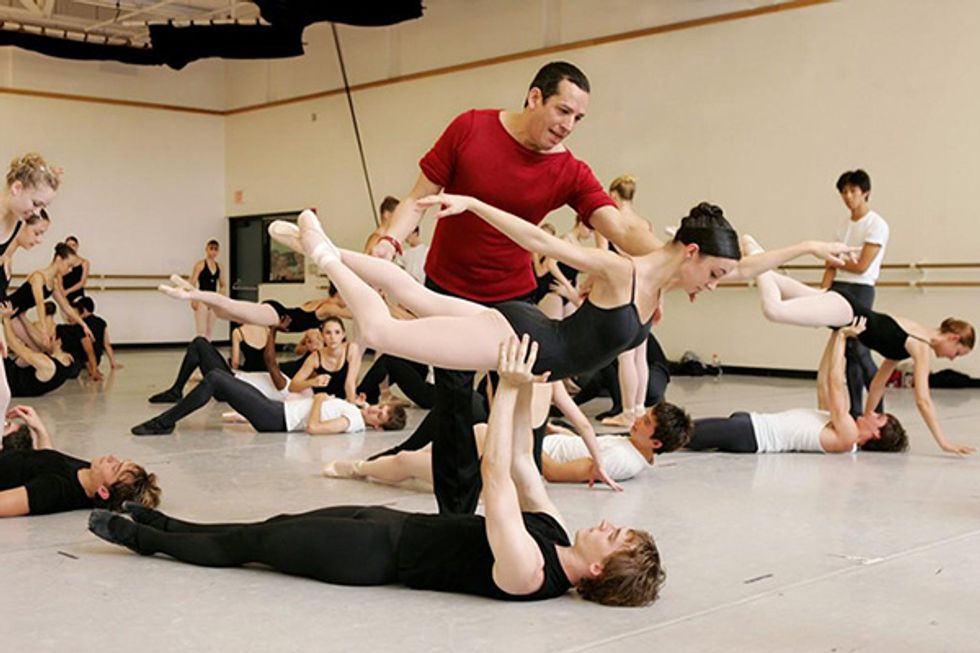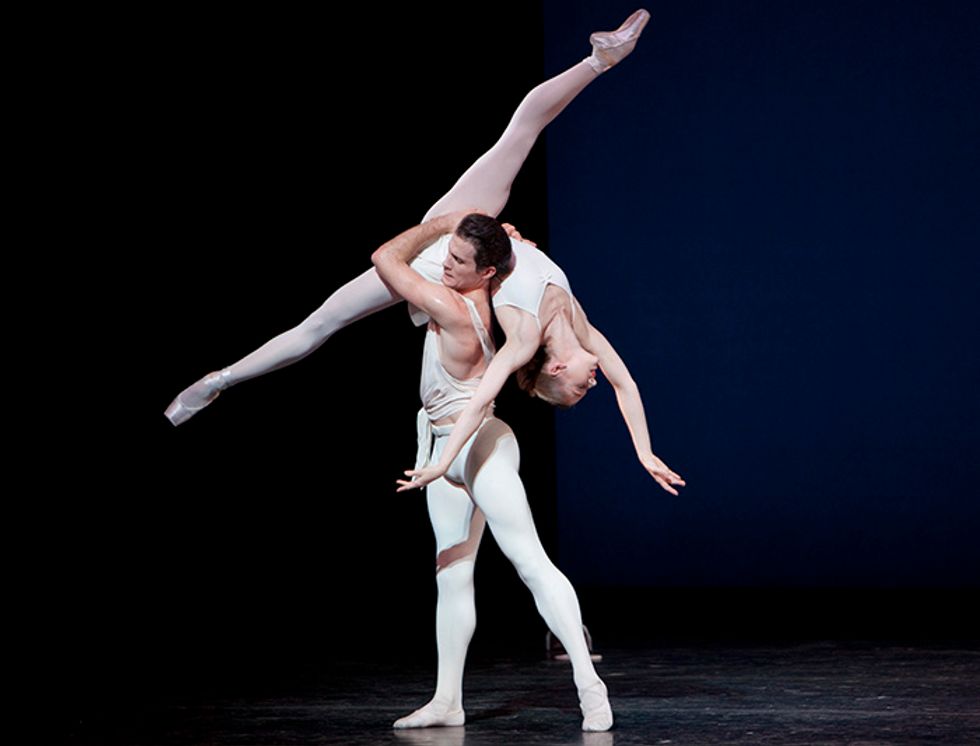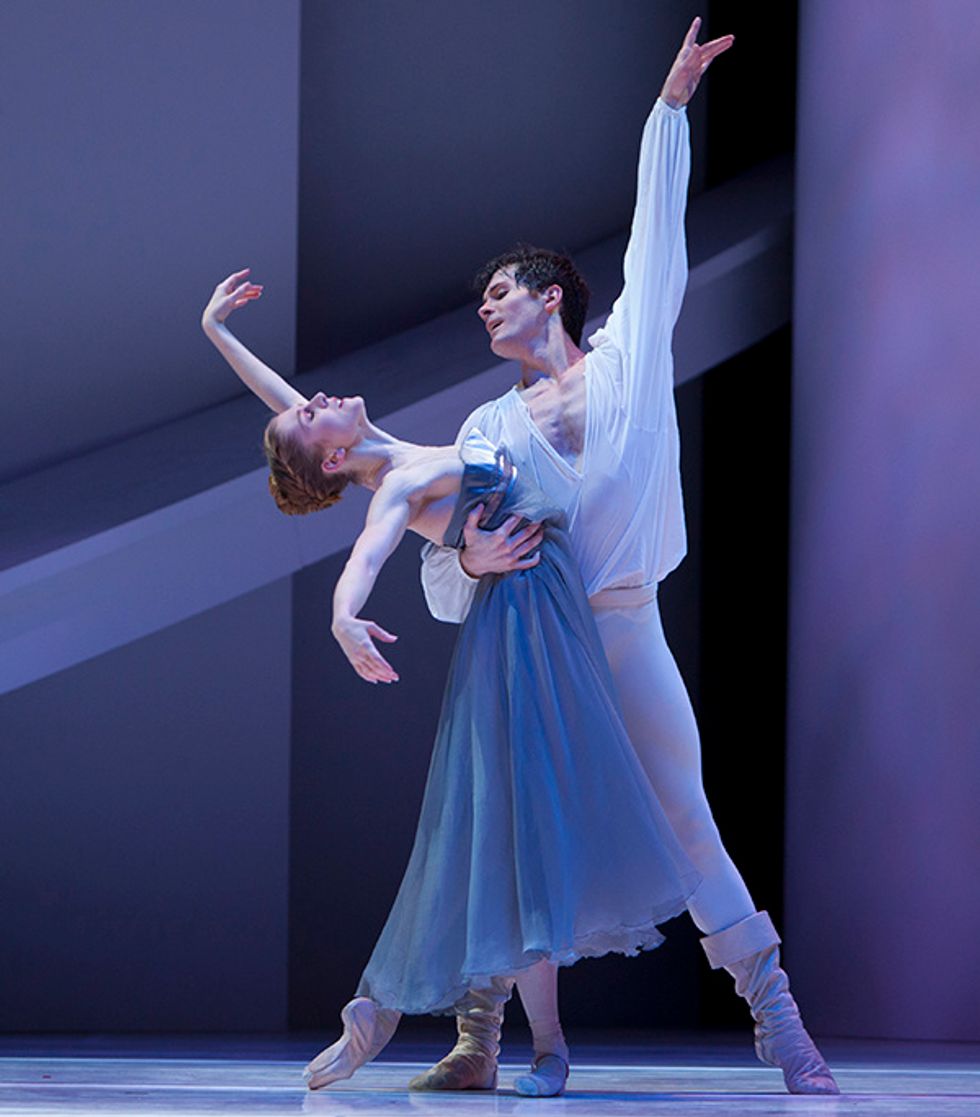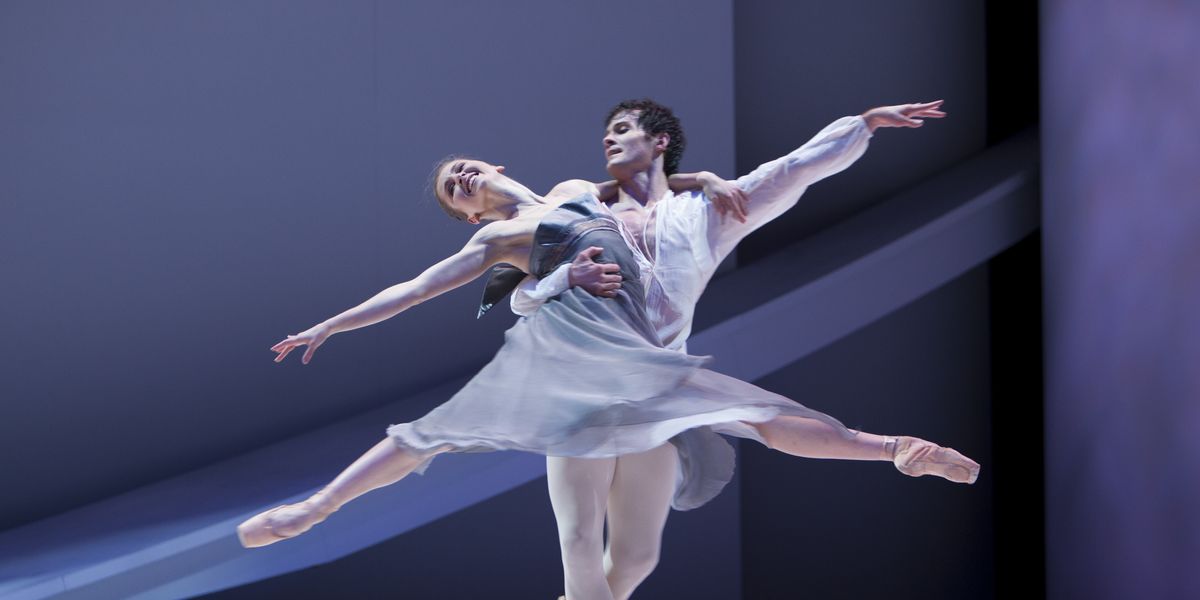The Six Partnering Mistakes He's Probably Not Telling You About—But You're Definitely Making
Partnering training is one of the most nuanced parts of dance education. And yet, so much of it is entirely focused on male students. Beyond the basic principles—like holding your core and avoiding slippery leotards—young women often have little direction other than performing steps they already know with the help of a male dancer. But they have just as much to learn about becoming a good partner. Communication is key—but there are also some mistakes that your counterpart may not think to mention.
Mistake #1: Forgetting to breathe

Seth Orza and Lesley Rausch stay loose and free in William Forsythe’s In the Middle, Somewhat Elevated. Photo by Angela Sterling, Courtesy PNB
Especially when you’re just starting out, dancing so close to someone can feel weird. Students and professional dancers alike can get nervous when working with a new partner for the first time. But holding unnecessary tension in your body—and forgetting to breathe—interrupts your natural rhythms and prevents you from feeling “in sync” with the dancer beside you. “When you breathe into the step, and in between steps, you can look at the guy and know that he will be there,” says Claudio Muñoz, ballet master of Houston Ballet II.
Mistake #2: Not trusting your partner, or yourself

Claudio Muñoz helps students build trust in their partnerships. Photo by Bruce Bennett, Courtesy Houston Ballet
Second-guessing throws off your rhythm and energy. “It’s the most difficult part of learning how to partner as a student,” says Seth Orza, principal dancer at Pacific Northwest Ballet. “It takes practice.” Trust that if you’re in partnering class, it’s because your teacher knows you’re ready.
“The more experienced dancer has to be the mature guide and say, ‘I will be there, don’t worry,’ ” says Muñoz. “It’s about communication.” Don’t let fear hold you back. “It’s not going to be perfect every time,” says Orza. “And it’s different with everybody. Some people you mesh better with than others.”
Mistake #3: Trying to help too much

Seth Orza, here with Carla Körbes in Apollo, says partnerships needs to be equal to be successful. Photo by Lindsay Thomas, Courtesy PNB
You want to make your partner’s life easy. But you also have to let him carry his own weight. This is the most common mistake Orza sees, and it often manifests as putting too much energy into a step, which actually makes your partner’s job more difficult. “In Sleeping Beauty, when you do the en dedans pirouette into a fish dive, if the girl overdoes the turn and tries to help too much, it can swing out of control,” he says. “It has to be an equal partnership. If one person’s doing too much, it throws off the movement.”
Mistake #4: Forgetting the music and mood

Seth Orza and Carla Körbes use music to connect with one another. Photo by Angela Sterling, Courtesy PNB
When it comes to performing your side of the pas, musicality should be your number one priority. “When you dance with the same person for a long time, you have a shared internal rhythm—that’s why everything comes so easily,” says Muñoz. Until you’ve developed that intimate connection with a partner, “the music is the link between the two dancers.”
To add depth to this shared rhythm, talk with your partner about the mood and story that you’re expressing. “It’s imperative—they have to approach the choreography with the same mood,” says Muñoz. “It makes you feel, makes you connect with the other person.”
Mistake #5: Getting too cocky

Muñoz says being humble and listening to one another are key. Photo by Cameron Durham, Courtesy Houston Ballet
Confidence is important to partnering, but for dancers with a year or two of experience under their belts, it can be tempting to think you’ve learned it all. “Listen to each other, and stay humble,” says Muñoz. If you ever find yourself assuming that problems are your partner’s fault, it’s time to pause and reevaluate. If in doubt, a teacher can step in to help navigate a tricky step.
Mistake #6: Becoming a cookie-cutter partner

Orza tailors the steps to his partners. Photo by Lindsay Thomas, Courtesy PNB
“Some dancers are stubborn and want to do the steps the way they feel they are supposed to do them, no matter who they are dancing with,” says Muñoz. “That is wrong. You have the same ingredients, but you have to be willing to change and accommodate.” Things won’t feel exactly the same from one partner to the next, and that’s okay. Always listen for ways that you can make your partner’s job easier.




